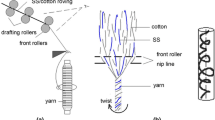Abstract
A conducting polymer consisting of graphite particles in on epoxy matrix has been employed as a transducer. When subjected to strain, the conductor undergoes a resistance change which is due to the variation in contact pressure between the particles. Of more importance is the permanent resistance change produced in the conductor as it is cycled. This resistance change is due to a wear mechanism which improves the contact area between adjacent particles.
The permanent resistance change is a consistent and reproducible function of the strain range and the number of cycles. As such, the conductor can be employed as a sensor to indicate fatigue damage. Studies conducted with two-level fatigue tests indicate that the sensor can be employed with complex strain histories. The sensor output in two-level fatigue tests of both the high-low and low-high sequence was interaction free but dependent on the magnitude of the strain range. Nevertheless, a simple graphical approach was established to predict fatigue exposure from the output.
Stability of the sensor to both time and temperature was examined. Resistance changes associated with time are small and monotonic initially and, after an initial stabilization period of a month, the changes are negligible. Temperature stability represents a more significant problem which will require further work. However it appears that the sensor will perform adequately in the temperature range of 75±15°F.
Similar content being viewed by others
References
Miner, M. A., “Cumulative Damage in Fatigue”,Jnl. Appl. Mech.,12,A-159 (1945).
Corten, H. T. and Dolan, T. J., “Cumulative Fatigue Damage”, Proc. Int. Conf. of Fatigue in Metals, Inst. Mech. Eng. and ASME, (1956).
DeForest, A. V., “Fatigue Indicator”, U.S. Pat. 2,449,883, (Sept. 21, 1948).
Harting, D. R., “The-S/N- Fatigue-life Gage: A Direct Means of Measuring Cumulative-fatigue Damage”,Experimental Mechanics,6 (2),19A-24A (1966).
Dally, J. W. and Helm, L. N., “Proof-Testing Graphite and its Design Implications”,Inl. Am. Cerm. Soc.,48 (7), (July 1965).
Additional information
J. W. Dally was Professor of Mechanics, Illinois Institute of Technology, Chicago, Ill. 60616; is now Head of Department of Mechanical Engineering, College of Engineering, University of Maryland, College Station, Md. 20742. G. A. Panizza was Research Assistant, Illinois Institute of Technology, is now Associate Professor at the University of Uruguay, Montevideo, Uruguay.
Rights and permissions
About this article
Cite this article
Dally, J.W., Panizza, G.A. Conductive polymers as fatigue-damage indicators. Experimental Mechanics 12, 124–129 (1972). https://doi.org/10.1007/BF02328560
Issue Date:
DOI: https://doi.org/10.1007/BF02328560




